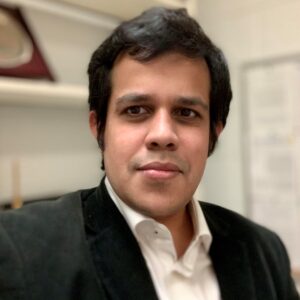Constructing an ab-initio disease spread model to decipher Covid-19 type pandemics
Speaker: Dr. Swetaprovo Chaudhuri - Associate Professor Institute for Aerospace Studies - University of Toronto
Date: Feb 19, 2021; Time: 2:30 PM Location: WebEx
https://s.uconn.edu/meseminar2/19
Abstract: In this talk, we will attempt to address the following two questions concerning Covid-19 type infectious respiratory disease spread:
1. Can we identify the relative importance of the different dominant transmission routes of the SARS-CoV-2 virus? Initially Covid-19 was assumed to spread by large droplets whereas of late the airborne route has been recognized to be important. Knowledge of the most dominant transmission route is necessary to design corresponding disease mitigation strategies.
2. Can we construct a disease spread model from the flow physics of transmission? Present, widely used epidemiological models do not account for the flow physics that underpin disease transmission.
To these ends, the probability of infection caused by inhaling virus-laden droplets and their desiccated nuclei are individually calculated. At typical, air-conditioned yet quiescent indoor space, for average viral loading, cough droplets of initial diameter between 10-50 micron are found to have the highest infection probability while it is the airborne droplet nuclei, due to their persistence (especially in poorly ventilated spaces), contribute most to the disease spread. Combined with molecular collision theory adapted to calculate the frequency of contact between the susceptible population and the aerosol cloud, infection rate constants are derived ab initio, leading to a Susceptible-Exposed-Infectious-Recovered (SEIRD) model applicable for any respiratory event – vector combination. Viral load, minimum infectious dose, and dilution of the respiratory jet/puff by the entraining air are shown to mechanistically determine specific physical modes of transmission and variation in the basic reproduction number, from first-principle calculations.
Biographical Sketch: Prof. Swetaprovo Chaudhuri works in turbulent reacting flows and propulsion and is known for his contributions on turbulent flame stabilization, propagation, and structure using experiments, theory, and computations. After his BE from Jadavpur University (2006), he earned his PhD from the Department of Mechanical Engineering, University of Connecticut in 2010, working under Prof. B. M. Cetegen. He worked at Princeton University as a research staff with Prof. C K. Law and then at the Indian Institute of Science, as an Assistant/Associate Professor. Subsequently, he joined the University of Toronto Institute for Aerospace Studies as a tenured Associate Professor. Prof. Chaudhuri has authored/co-authored over hundred articles in top journals, conferences, and books, and has been honored by ASME, UConn, INSA, IAS, UTIAS. He is an elected Associate Fellow of AIAA (class of 2021) and a member of its Propellants and Combustion technical committee.
